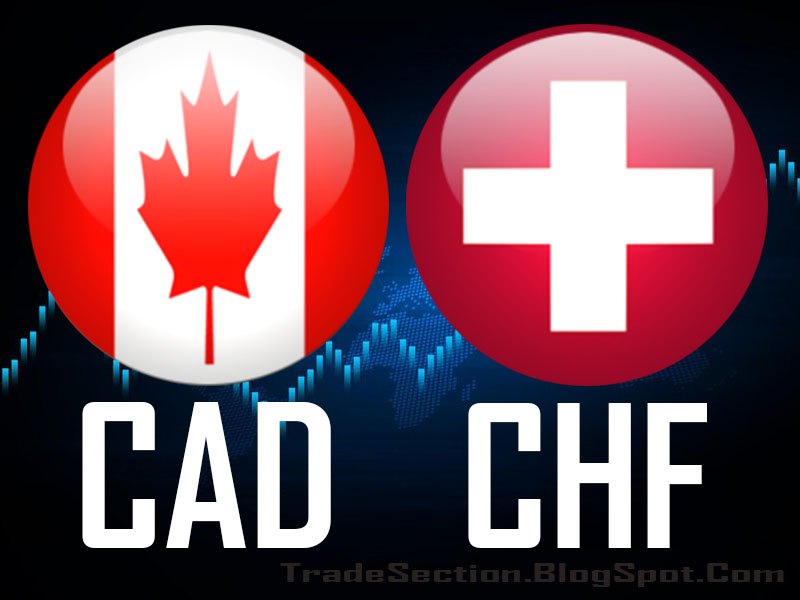📈 Why This CADCHF Buy Signal Stands Out
Fundamental Outlook for CADCHF
The recent developments in the Canadian and Swiss economies have created a compelling backdrop for the CADCHF currency pair. The Bank of Canada’s decision to maintain interest rates at 5.25% in its latest policy meeting, combined with robust economic indicators such as a 3.1% annualized GDP growth in Q2 and strong employment figures, has bolstered the Canadian Dollar (CAD). These factors suggest a resilient economy driven by resource exports and domestic consumption. Meanwhile, the Swiss National Bank (SNB) has signaled cautious optimism, with warnings of sustained inflationary pressures and a potential delay in rate cuts, which has kept the Swiss Franc (CHF) supported. However, heightened geopolitical tensions in Europe and diverging economic performance between the two nations have led to increased volatility. The CADCHF Trade Analysis indicates that the CAD is gaining momentum against the CHF, as commodity prices, particularly oil, stabilize and global demand for Canadian exports rises. Additionally, the USD’s relative weakness in the broader market has reduced pressure on the CAD, allowing it to strengthen against the CHF. Investors are closely watching for further cues from both central banks, as the divergence in monetary policies could extend the current trend.
From a technical perspective, the CADCHF Technical Analysis reveals a critical breakout pattern. The pair has recently tested the 0.57210 level, aligning with the provided CADCHF Trade Signal. This entry point follows a bullish candlestick formation and a key resistance level on the 4-hour chart, with the moving average crossover reinforcing the upward bias. The target at 0.57660 is supported by historical price action near the 200-period SMA, while the stop-loss at 0.56980 safeguards against a potential retest of the 0.56800 psychological level. The CADCHF Trading Forecast suggests that sustained support from the Bank of Canada’s hawkish stance and improved risk appetite in global markets could propel the pair higher. However, traders must remain vigilant for any signs of CHF overextension, as a sharp rebound in Swiss inflation or unexpected SNB intervention could trigger a selloff. The interplay between fundamental drivers and technical setups underscores the importance of monitoring both macroeconomic reports and intraday momentum shifts. For instance, a weaker-than-expected Swiss trade balance or a slowdown in European demand might weigh on the CHF, amplifying the CAD’s gains. This convergence of factors positions CADCHF as a high-potential candidate for directional movement, with the current signal reflecting a calculated risk-reward scenario. The pair’s recent consolidation phase also hints at a potential continuation of the uptrend, providing a favorable entry point for traders aligned with the bullish narrative. A reliable source for ongoing updates on central bank policies and market sentiment is the Bloomberg.
RSI Strategy & Trend Setup in CADCHF
The current 15-minute price structure is forming a clean sequence of higher highs and higher lows, validating directional strength. This setup meets our criteria for momentum-based trade signals.
On the 15-minute chart, CADCHF has closed two consecutive candles above the 100-period Simple Moving Average (SMA100) at 0.57210. This is widely used by professional traders to confirm trend continuation after reversal.
✅CADCHF Signal Setup – Entry, Stop & Take Profit Levels
- Selected Pair: CADCHF
- Sentiments: Bullish
- Entry: 0.57210 or Better
- Targeting: 0.57660
- Risk (SL): 0.56980
- Risk:0.5% of equity.Important! Keep it as low as
- Issued At: 2025.10.01 17:31
📌 Trading Conditions Before Entering CADCHF
- Apply risk-reward ratio of at least 1:1.5 for this CADCHF trade idea.
- Avoid entering during high-impact trading news related to CADCHF to reduce risk of sudden volatility.
- Use a stop-limit order if volatility spikes around key levels.
- Only enter the trade when price reaches or improves upon the recommended entry price based on RSI signal.
- This signal is best suited for scalpers and intraday traders.
- Ensure there’s no major economic data within the next 30 minutes post-entry.
"The quiet trader often makes the loudest gains."
Important: The trade concept on CADCHF should be tested on demo accounts first. Avoid direct implementation on live accounts.



0 Comments